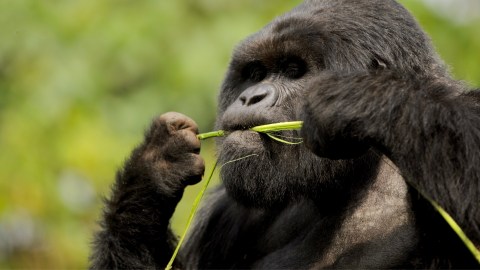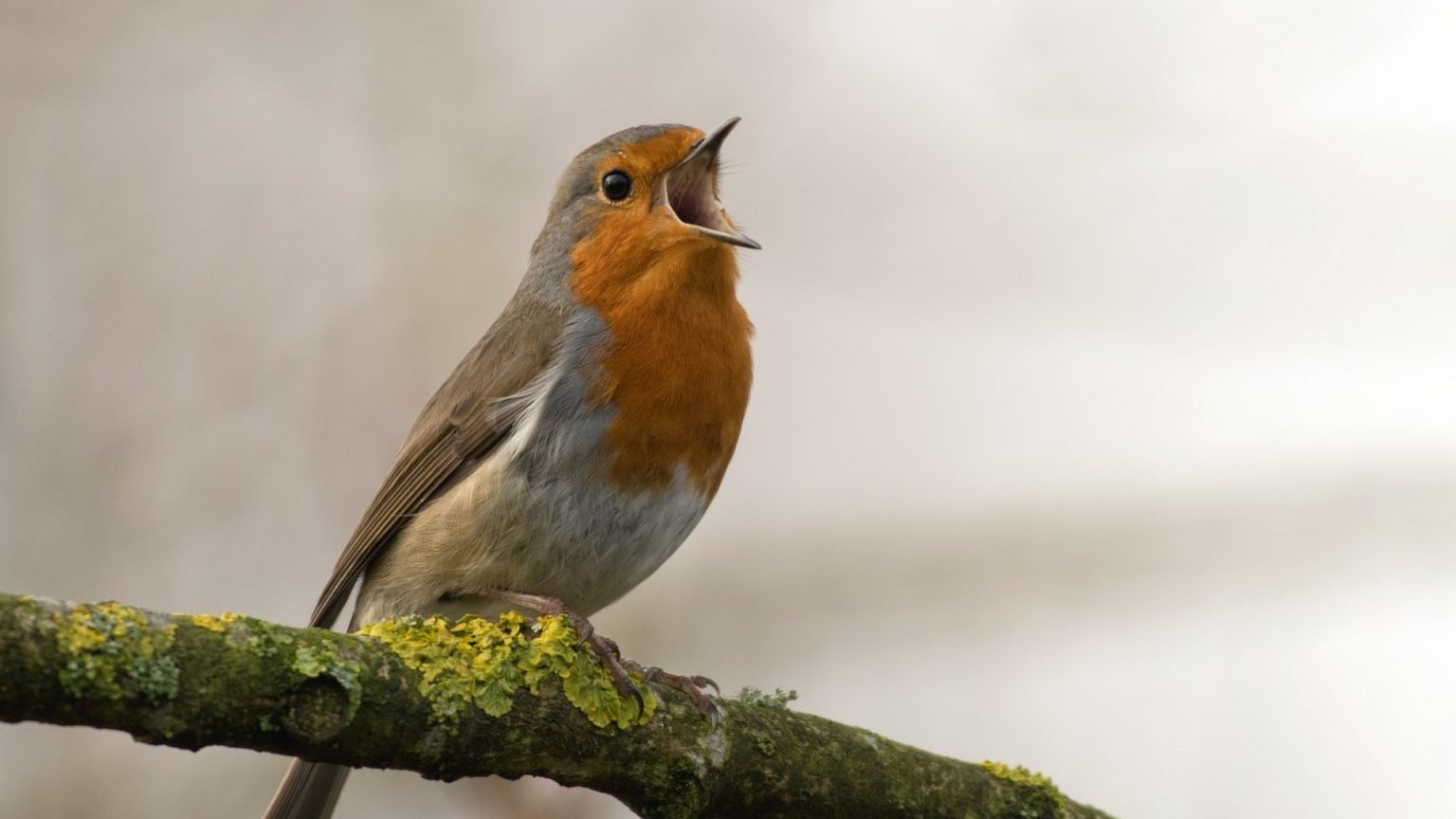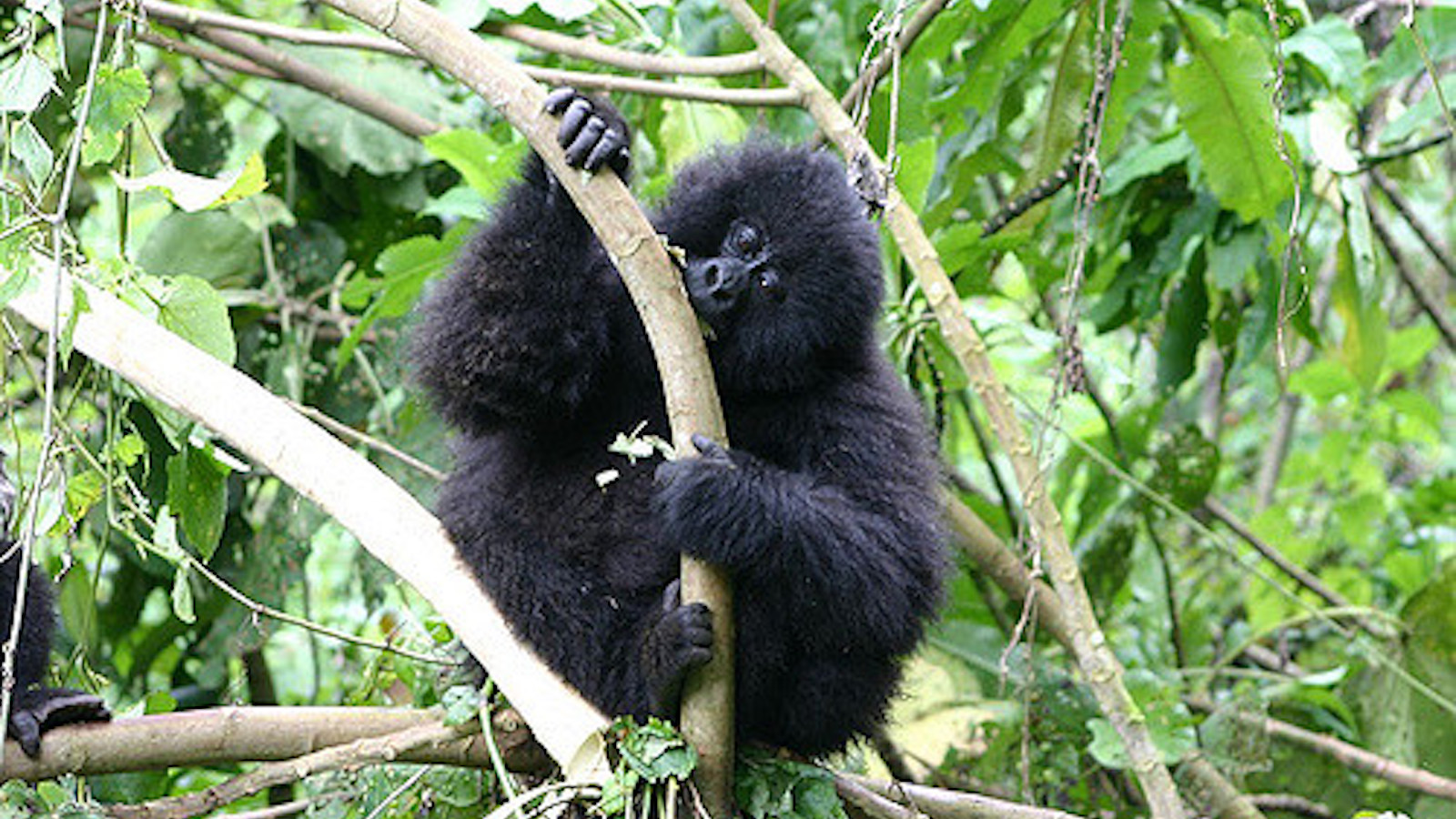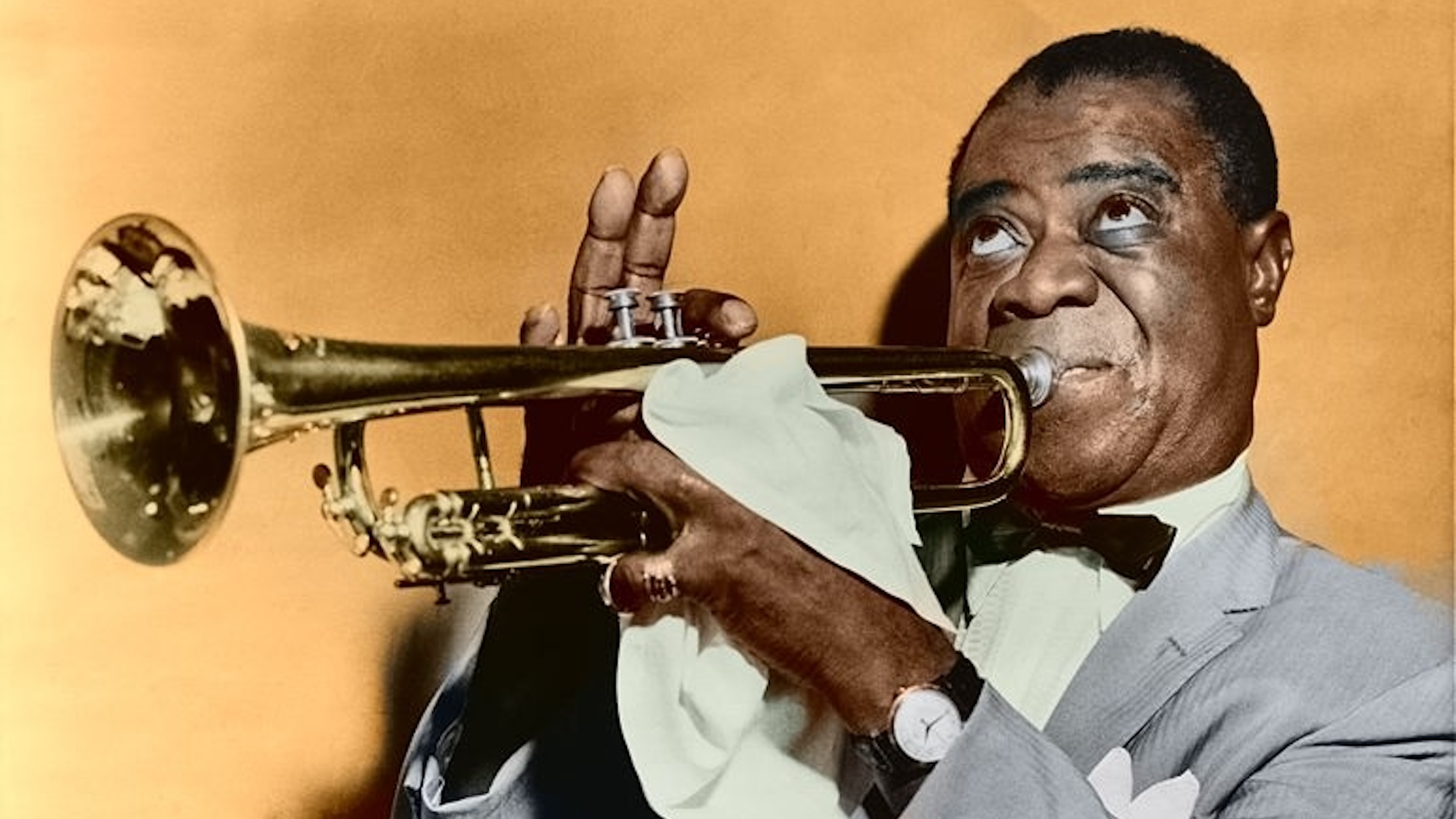Nom-nom or dinner call? Silverbacks sing as they eat.

Image source: Grant Tiffen/Shutterstock
- Recent recordings of gorillas singing as they eat add the species to a lengthening list of musical eaters in the animal kingdom.
- Two types of songs have been recorded: a hum, and, well, gorilla improv.
- It’s suspected that spoken language may begin with songs.
Sing for your supper, and you’ll get breakfast
Songbirds always eat — Moss Hart, The Boys from Syracuse, 1938
Gorillas, too, apparently. Primatologist Eva Luef of the Max Planck Institute for Ornithology in Seewiesen, Germany recently observed — and recorded — two wild western lowland gorillas in the Republic of Congo singing as they ate. The late primatologist Dian Fossey previously described the phenomenon as “belch vocalizations,” which sounds about right, especially after our recent Thanksgiving. The new research, however, for the first time ties it to specific behaviors. Luef’s finding are published in PLOS ONE.
Gorillas are hardly alone in song: They join other musical species such as chimps, bonobos, frogs, and giraffes. Still Luef’s work may offer up some intriguing clues into the origin of language.
Leuf actually caught two type of vocalizations in the dominant silverback blackback adolescent males she observed. It seems that in the wild, they’re the only community members with singing rights. In wild primate cultures with less rigid hierarchies, notably chimps and bonobos, everybody gets to chime in at mealtime.
Though in captivity things are a bit different, Ali Vella-Irving of the Toronto Zoo is hardly surprised by Leuf’s discovery, she tells New Scientist. She hears this kind of singing all the time. “Each gorilla has its own voice: you can really tell who’s singing. And if it’s their favorite food, they sing louder.”
This jibes with what Luef found: The gorillas seem to be inspired only by their preferred food. She found that “aquatic vegetation or seeds elicited a lot of food calls. And… they never called when they were eating insects like termites or ants.” Because of course.
Hummmm…
One of Leuf’s silverbacks emitted a low-frequency hum as he ate. The scientist hypothesizes two possible meanings for the hum. First, it sounds like a noise of satisfaction. Secondly, says Leuf, since “He’s the one making the collective decisions for the group. We think he uses this vocalization to inform the others ‘OK, now we’re eating.'” Others have suggested it may mean, “Go away, I’m eating here.”
Singing the praises of a meal
Another silverback was more improvisatory, singing higher in pitch, and continually giving voice to a series of melodies that didn’t repeat. The suspicion is that this ever-evolving ditty was simply a happy tune accompanying happy eating.
Speak Up
The variety of songs and the individuals allowed to sing them among different species provides further insight into the way language incorporating visual signals and sounds may evolve. Earlier research suggests that songs may represent a precursor of our spoken language.These variations also provide clues into each species’ social structures, as psychologist Zanna Clay explains: “We think food calls are a very social signal; it’s about coordinating feeding events with others. So in gorillas you get the dominant male producing the calls, because he has to keep hold of all the females in his group.”
If music is a universal language as is often claimed, does this finding suggest “nom-nom” is a universal song?





